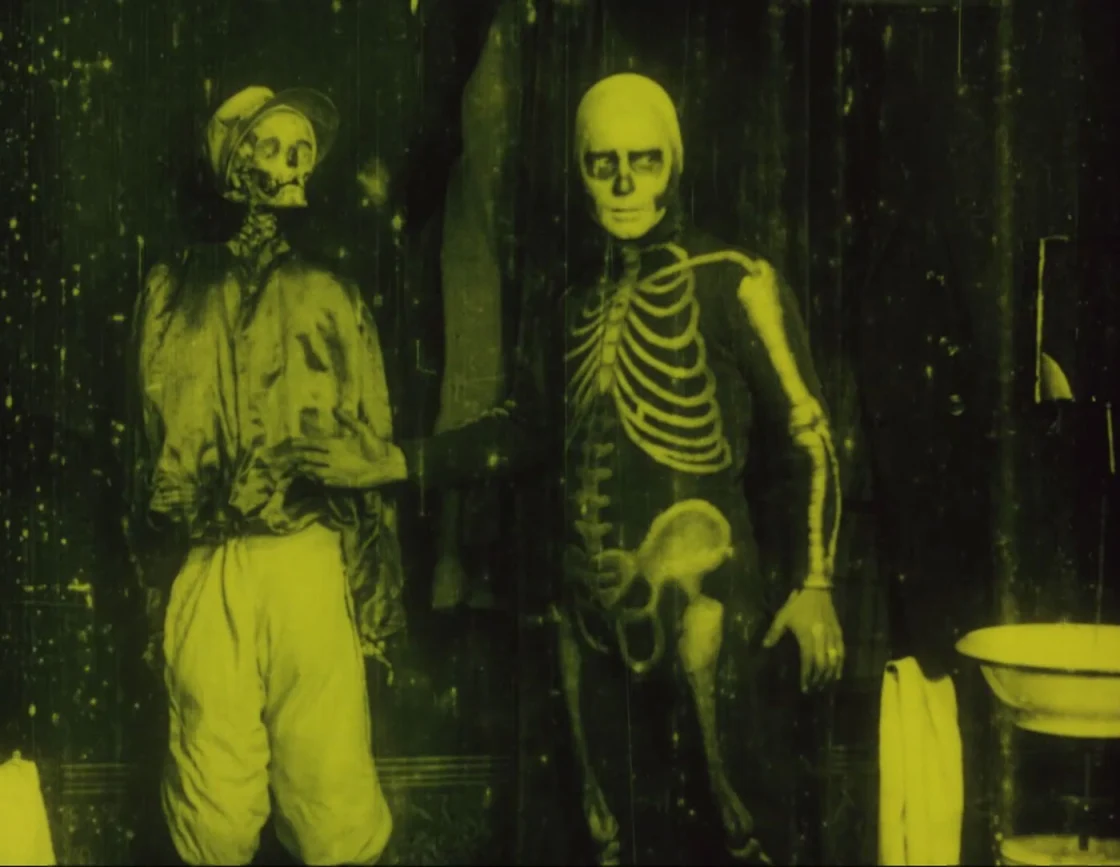Tinkering with Player Agency; Death and More
I quite often see people saying things like ‘but that limits player agency’ when talking about mechanics and adventure design in fantasy RPGs. It usually seems implicit that player agency is always good, and limiting it is always bad. This discussion usually takes place relative to games where character death is mostly arbited by the GM and the book, as is all the canonical lore of the world being played in. This clearly limits player agency. This means player agency has boundaries. Can we adjust with them to make things more fun?
You can argue for giving power over character death to the players. Bin that death save. You should definitely establish how character death works in a session zero because expectations can vary wildly. Anyway, that’s not what this post is about. Let’s dive into some ways of giving players a bit more agency in practical adventure running terms. I’m going to use my nascent DCC campaign as a framing device. If you’ve never played in or run a funnel, it’s useful to know what one is.
This is a new campaign with players who are mostly newish to RPGs and we’re all entirely new to each other as people. We’ve just finished playing through Sailors on the Starless Sea as a funnel and we’re about to start The One Who Watches From Below. After the funnel, I offered up 4 DCC modules I’ve not run before, a couple of hexcrawl-y things I have, and the possibility of designing our own campaign and asked folks what they enjoyed and wanted to do more of. There’s clearly an interest in doing a big hexcrawl campaign, but the biggest vibe was doing another DCC adventure because first they enjoyed this one, and one guy said he really liked the art on TOWWFB and so away we go. This is player agency, and it creates player buy in. It lowers the barrier of players being able to speak up about what they want from the game. It means if we’re not enjoying it we can change it up.
Idea one: ask the players what they want and give it to them.
A significant thing about running a funnel is that you hit the ground running. Within a few minutes of sitting down for the first time you have multiple characters and are off on an adventure. The extent of the lore regarding where the characters came from at the start was ‘people have been disappearing from your village, you think the old keep on the edge of town is to blame, so you’re on your way there to investigate’. This is a really hard framing that lacks player agency. Or is it? We soon discovered in play that John the Grave Digger and Handle the Ditch Digger are fierce business rivals. We also established the Sage in the group is pretty much the only educated person in town. This is a small town. We decided the keep was older than the town and all the rumours about it come from pretty much a single old man who founded the town. We established Marigold the cow was the only one in town and considered immensely valuable by all, even more so after her owner was flung into the sea by a giant tentacle. I say we, this is all stuff the players just said at some point. I didn’t tell them to or ask them to, it just came up. In doing this, lots of information about the village has been built in the players’ heads. The lack of definition in our setting created a vacuum of information and they filled it. This is player agency.
Idea two: leave stuff undefined and let the players fill in those gaps when they become relevant
Now, we’ve come out of a funnel and we’re about to head into another adventure. Our characters go from level zero to level one and we have an adventure with a premise that I need to foist upon the players. That’s okay because I have buy in from them to set up the premise because they chose this adventure. I have the agency here, with their consent. I’d like to give some of it back to them though. This will happen in two stages, a montage, and a segue.
The Montage. We ended Starless Sea with the party escaping back to the village with quite a lot of rescued villagers. From here, we fast forward six months. I ask the players the following questions:
- After you got back to the village, what changed?
- How/when did you decide the adventuring life was for you?
- Since you packed up and left, has it gone well?
- Why do you carry on, what are you hoping to get out of it?
- What’s a memorable moment from these first few months, whether good or bad?
Particularly with the last question, involving the other players and characters is good. Making those little anecdotes centred on the group is good. This is all absolutely dripping with agency.
Note that this occurs in our still largely undefined setting, and it takes the party away from what little we did define. I’m sure some folks are thinking this is just like writing a backstory for your level one character in whatever game you normally play. It is. Except you do it together, and you do it after the characters have been on their first adventure. I’m relying on the vacuum to tell me something about how the players see their characters and the world they inhabit. Then we glue it all together as a group.
Idea three: don’t silo creation of lore or setting to one person, share it out.
The Segue. Once we’ve done the montage I’m going to hard frame into the start of the adventure.
‘you stand outside the entrance to the Cave of Secrets. A wooden sign has ENTER scrawled on it in charcoal, it hangs from a small wizened tree, battered by mountain winds.’
This doesn’t feel much like player agency. Some might even whisper the R word. The adventure has some suggestions for how you can set it up, but I’m not going to use any of them. I’ll briefly explain what they have been told the cave of secrets contains, and then ask:
- How did you hear about the cave?
- Was it a long journey from where you were before?
- What was the journey like?
- What rumour/dream of treasure kept you going?
- What rumour/fear about what lurks within kept you awake at night?
This is also player agency. Simple things like the way information is acquired, journeys and locations are all normally the preserve of the GM, hidden away behind a curtain. The player only has agency to define their character relative to information provided by the GM. Most of the information doesn’t really matter, but it’s the GM’s role to make it. We can recentre this so it is the GM’s role to decide who decides and when. This GM’s role becomes much more of a catalyst for players to tell their character’s story. Oh, and I’ll be pencilling in their treasure ideas into places in the adventure, and their fears into random encounters.
Idea four: Shift agency around. You can take it away when you have buy in, but you can also give the players control of creating the world.
We’ll look at doing this further into running the adventure. There’s a big pit of bones. The skeletons in it all have no eyesockets. The skeletons get tossed in complete with equipment, but then stripped of loot. There’s an axe down there that got missed. The axe is specifically useful later on. This is all defined by the adventure. If we’ve decided to give the players agency over the world outside the pages of the published adventure, how do we do so within it as well? We add opportunities. When the players declare they’re searching amongst the skeletons we provide an opportunity.
It’s clear the skeletons have mostly been stripped clean of loot. It’s possible something got missed though. What do you think someone is most likely to have missed when doing so? What hazards might lurk among the piles of bones?
Then I make this a simple luck check the player can choose to take or not. Pass = find what you said you expected to. Fail = nothing. Fail by >5 = find the hazard. This could be tied to a search mechanic, a perception skill, whatever your system uses. I also tend to populate a random loot table with the things the players have looked for so they can show up elsewhere.
You can also do this with combat encounters.
The beastman gallops towards you, rusted weapon raised above its head and a horrid scream in its throat. What weapon does it hold? How do you defend yourself against its charge?
The second question is nothing unusual but the first gives the player more control in describing their own action. They play a swordsman who loves a bit of parry and riposte. All right, let’s have it. They see it as a club with a skull on top of that they duck under the swing of before they try to shank the beastman in the ribs. Sure thing. This also means the player sets up their own consequences for what happens if the beastman lands the attack.
Environmental details too.
You enter the cellar down rotting stops that creak and threaten to give way. This place is damp and it feel as if no one has been down here in some time. What foul smell fills your nostrils?
If it’s rotting flesh, have there be a dead body, or animal. If it’s damp and rot then give the walls dripping moss and scuttling insects.
Idea five: ask the players to define colourful details and then build on them
There’s some obvious caveats to all of this. Some players don’t want to do it, or aren’t good at thinking on their feet. In that case, don’t do it. Some players will act in bad faith and say their journey went well and they found a thousand gold in a sack on the road. Some players will say the beastman’s weapon is a single red rose or a measly dagger. Talk to them, if they can’t understand that this isn’t good for the game, that’s a shame and you’ll have to choose what you want out of that interaction.
Finally, the themes and ideas in this post are central to most Sealed Library products. If you think these ideas are appealing, you’ll likely find more in the stuff for sale on our print store or Itch.io page. If you’re keen on us blogging more, you can support that directly via Ko-Fi.

